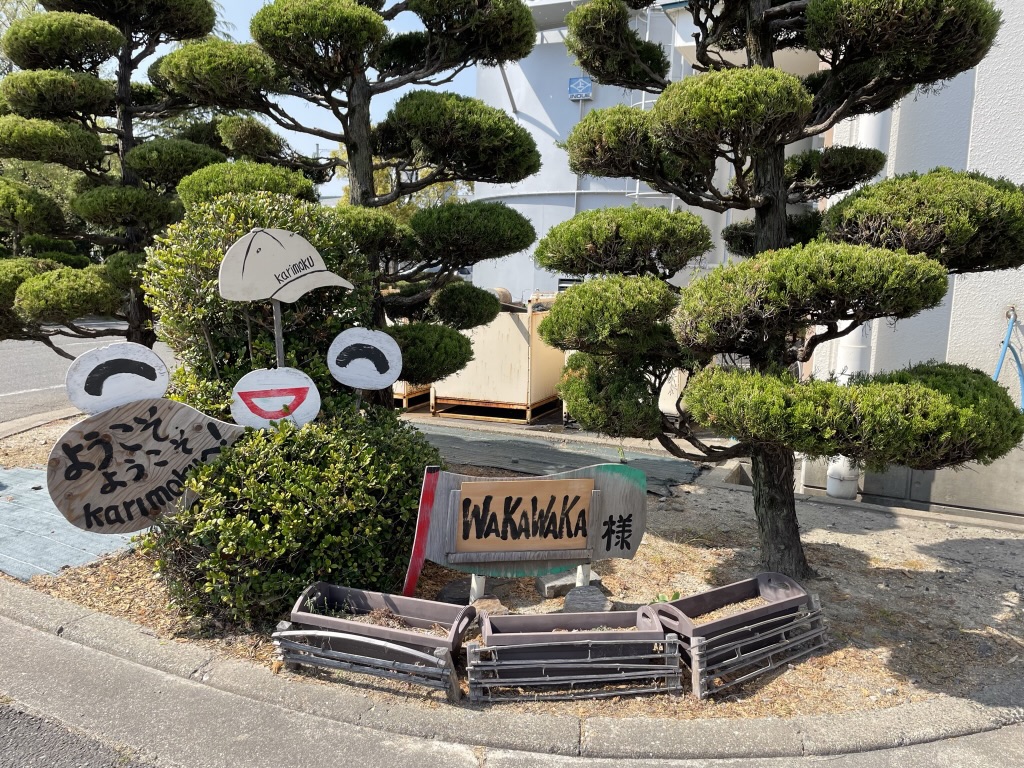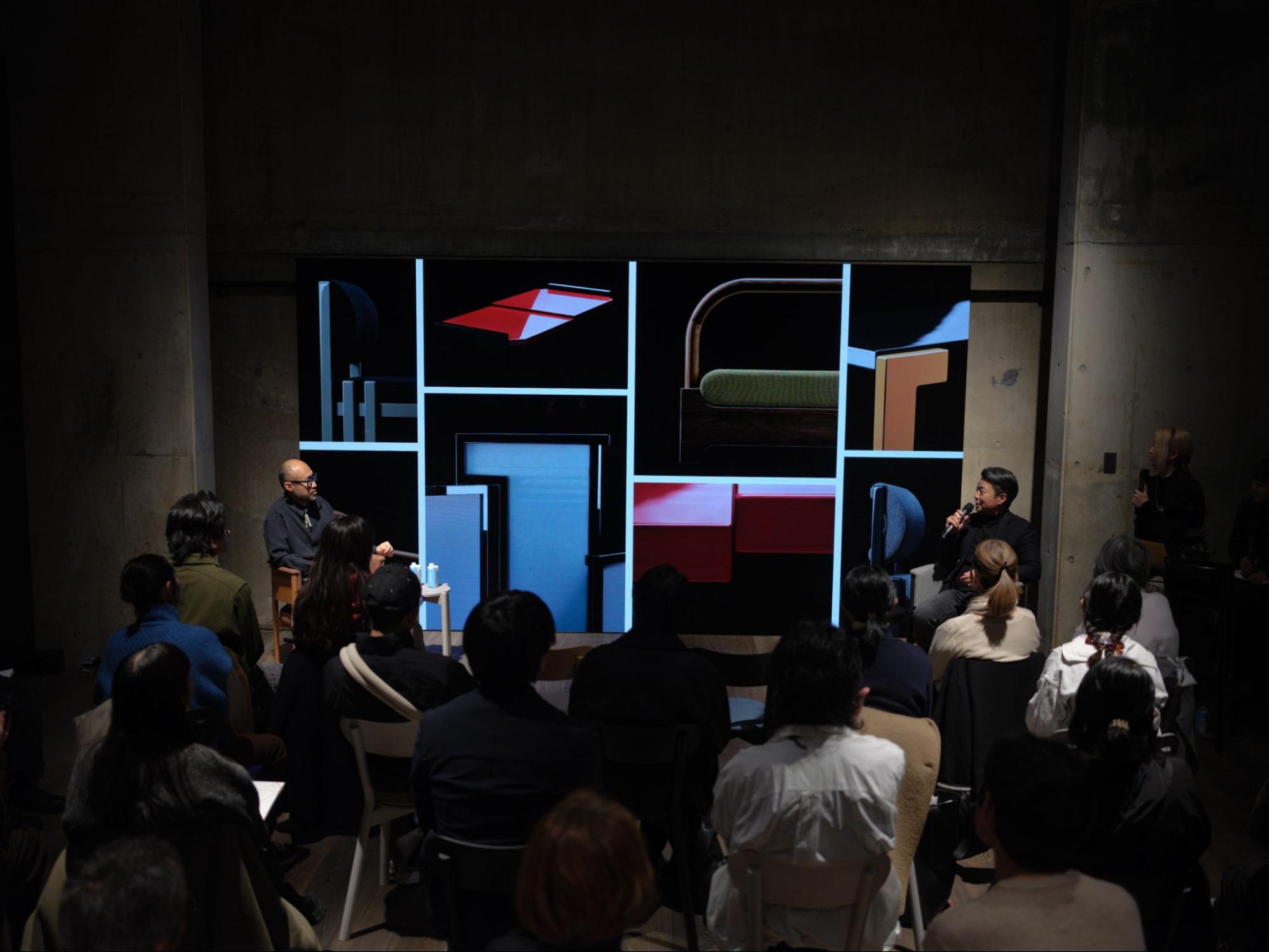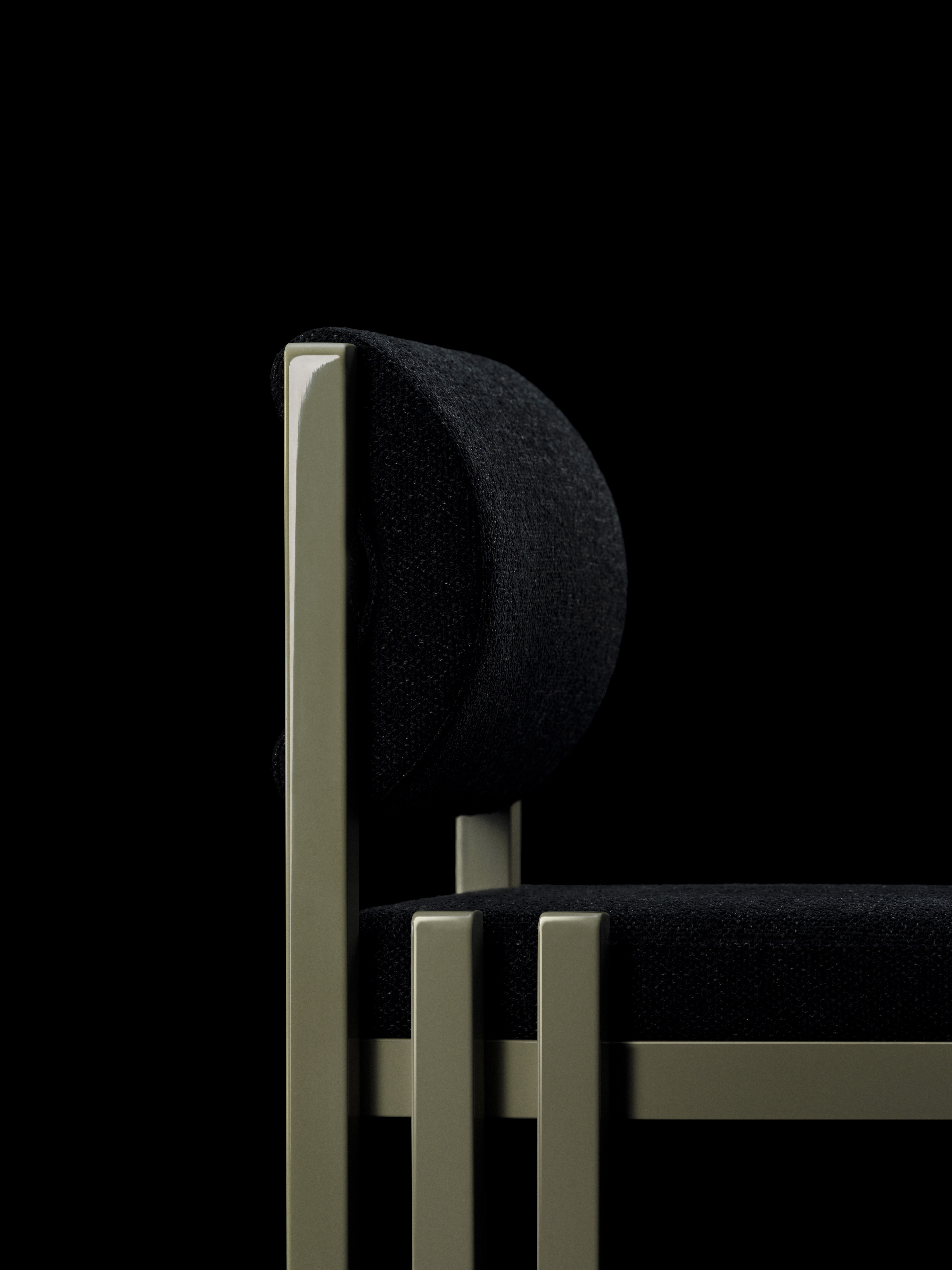

In October 2024, Karimoku Furniture Inc. launched a new project titled “KARIMOKU RESEARCH.” The Survey at the core of the project takes up four themes a year, and is conducted in partnership with creators, designers, artists, companies, and other parties, both inside and outside Japan, on each theme. The insights obtained from the Survey provide the basis for the display and development of new solutions that are not confined to furniture.
The theme of the second Survey is NEW TRADITION. We tackled it together with researchers from WAKA WAKA, a design studio whose activities are based in Los Angeles. The work resulted in the birth of 19 items that reinterpreted the traditional Japanese lifestyle and proposed a new style that mixed in Western outlooks from WAKA WAKA’s center in LA.
This article presents a detailed commentary on the trajectory traced by Survey 01: NEW TRADITION.


Shinichiro Okuda of WAKA WAKA, the design studio based in Los Angeles that works on handcrafted wooden furniture and functional objects, first visited the Karimoku Furniture plant in April 2022.
He wondered if some little products could be made from scrap wood (offcuts) no larger than 20 x 20 centimeters, which are generally burned to fire plant boilers. The collaborative project that was the predecessor of this installment of the Survey sprang from this inquiry.
What was born from this project and culminated in commercialization was the product SET VASE.
Partly because his grandmother was a tea ceremony teacher, Okuda had been interested in tea ceremony huts and rooms for some time. He had previously come down with COVID 19 and was quarantined for two weeks. While in quarantine, he designed a mobile tea ceremony room himself. He also proposed a one-flower vase that could be used in the house as an interior piece even by people living in Los Angeles.
The point of this project is the lacquered expression that conveys the quiet texture of the wood from the grain visible under the light color.
WAKA WAKA ordinarily takes the approach of handling everything from design and production to delivery by itself. The sets produced by the collaboration in which WAKA WAKA did the design and Karimoku Furniture, the production, was a first for the former. For this reason, Okuda had the aim of designing things that WAKA WAKA could not produce.
Many of WAKA WAKA’s products usually have a finish of oil or lacquer, but the company is not skilled in application of light and thin colored lacquer. In this situation, it was decided to take an approach to expression that would highlight the beauty of Japanese wood by making full use of the lacquering know-how of Karimoku Furniture.
“Because I entered this business from a career in fabrication, I never tried to design something I couldn’t produce. But at the same time, if I were to ask a different party to produce something I had designed, I knew I would probably get angry if it did not work out well. That’s why I had abandoned any such idea. This collaboration with Karimoku Furniture, however, produced items that went far beyond my expectations. I am extremely pleased with it.” (Okuda, WAKA WAKA)
Two of the photos taken when WAKA WAKA’s Shinichiro Okuda visited the Karimoku Furniture plant in Aichi Prefecture.
The photo on the right is a prototype of SET VASE and the scene from the selection of urushi colors.


Around the spring of 2024, Survey 01: NEW TRADITION got under way as a new project in preparation for the show at the KARIMOKU RESEARCH CENTER.
Hiroshi Kato, Vice-President of Karimoku Furniture, had the following to say about the reasons behind the participation of WAKA WAKA personnel as researchers in this Survey.
“I have always felt a desire to make proposals to the rest of the world that push Japanese aesthetics, values, and identity more to the entire. I would like to ask Mr. Okuda, who is interested in tea ceremony rooms and created SET VASE, a type of flower vase, not to stop here. I hope he will express his perspective of things and stance as a Japanese designer active in Los Angeles.” (Karimoku Furniture, Kato)
Okuda too thought that, since he had come all the way to Japan to make something, why not make something not available in the United States? As he was also especially attracted to the sophisticated lacquering technology of Karimoku Furniture, he revealed his vision of coating all the products with lacquer.
Nevertheless, the cost of such lacquering would be extremely high, and factories that could handle large-scale furniture were limited. Considering the realities of the road leading up to commercialization, there was a need to search for a different methodology.
In response, The Karimoku Furniture team suggested to Okuda full use of a different coating technology: polyester resin polishing (“poly-polishing” for short).
Poly-polishing is a type of coating technology applying “piano coating” used for grand pianos and the like. A polyester resin film with a thickness of about 1 millimeter is applied and then polished. This process is repeated from five to seven times. Its outstanding feature is that it leaves behind a mirror-like luster and depth. This technology was developed by Karimoku Furniture in the second half of the 1980s, and was used to coat furniture with a luxurious look.
Beginning in the 2000s, however, poly-polishing gradually fell out of use due to new trends and changing lifestyles. Because of the substantial cost of maintaining the related equipment and technology, Karimoku Furniture reportedly debated many times about whether to remove the poly-polishing line and introduce smoother, new technology.
Although poly-polishing was really in danger of extinction in Karimoku Furniture, the team sent a sample to the WAKA WAKA studio in Los Angeles. Okuda was quite pleased with it, and this solidified the direction of a collection of Japanese-style furniture using poly-polishing in place of lacquer.
“Usually, the design of chairs and tables comes first; after that, we start thinking about the coating or painting. It was the opposite this time. We decided on the poly-polish finish first, and then thought about the kind of furniture design that would enable interesting expression with the poly-polishing technology. For me too, it was a fresh way of proceeding.” (WAKA WAKA, Okuda)
The theme of NEW TRADITION for this installment of the Survey was a natural outgrowth of discussion.
Okuda described his interpretation of it, stating that he wanted to put out made-in-Japan products that, while carrying on the formats of traditional Japanese furniture, could be naturally used by people in the United States once brought there.
The first item designed was the zaisu, a legless chair used for sitting on tatami mats.
In the Japan of the 1970s, where Okuda spent his childhood, the Western-style interior of couches and carpets had already spread in Japan. The house where Okuda grew up did not have a zaisu. After he married his partner Kristin in 2009, however, the pair began to visit traditional inns with hot springs in Japan every year, and Okuda realized that the zaisu was a piece of furniture that could be casually used by Westerners as well.
Once they decided on the zaisu as the first item, they got ideas for zataku (low tables used with zaisu), partitions, coffee tables, chairs, and other items, one after another. It was the birth of a collection of 19 items in all.
Items incorporating “traditional patterns” such as dots, checks, and stripes imbued with the playful spirit characteristic of WAKA WAKA also made their appearance.
Partly because of the long distance between Japan and the United States, communication during the development basically took place online. There were many cases in which the teams aligned design and technical restrictions through online discussion.
This may be exemplified by the red table with a step (level difference) in the center. The design drawing that Okuda first submitted had a single large tabletop with respectively different boards pasted on top on the right half of the table and on the bottom on the left half, to create a step.
However, owing to the traits of poly-polishing technology, it was impossible to neatly finish the parts corresponding to the step corners. Therefore, the Karimoku Furniture production team made the suggestion of splitting the tabletop in two and joining the two halves in the center.
In this connection, Okuda praised the unanticipated results obtained through the collaboration, saying, “As things turned out, the change induced an interesting visual effect that was completely unexpected by me.”
In addition, for Karimoku Furniture as well, the project served as an opportunity for making big innovations in poly-polishing technology. The company took up the challenge of applying this technology to curved surfaces for the first time, and newly generated variations of diverse colors.
Thereafter, Okuda saw samples of the finished furniture in October 2024. He said he was deeply moved by the depth and texture resulting from Karimoku Furniture’s poly-polishing technology.
At the same time, inspection of the actual articles revealed new issues. After adjustments on the samples in response, the collection was shown at KARIMOKU RESEARCH CENTER beginning in January 2025. At present, the teams are in the process of selecting items for commercialization and making readjustments with a view to officially launching sales inside and outside Japan.
Part II of this article digs deeper into subjects such as TRADITION and NEW TRADITION in the eyes of WAKA WAKA, “Atmospherism” as a very recent theme, and approaches going forward.